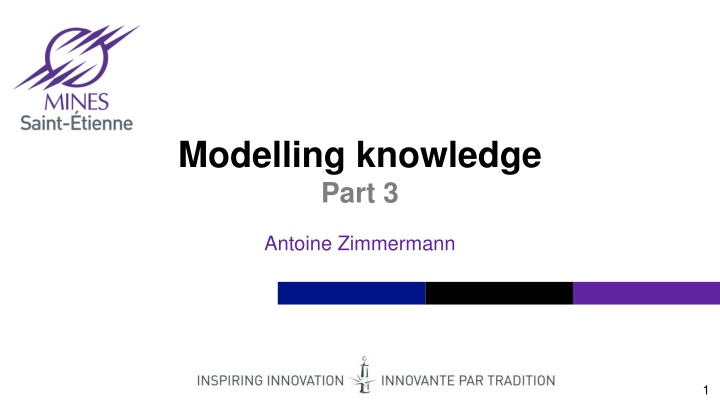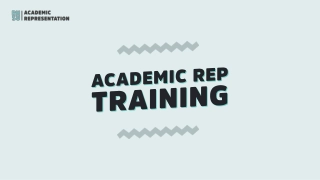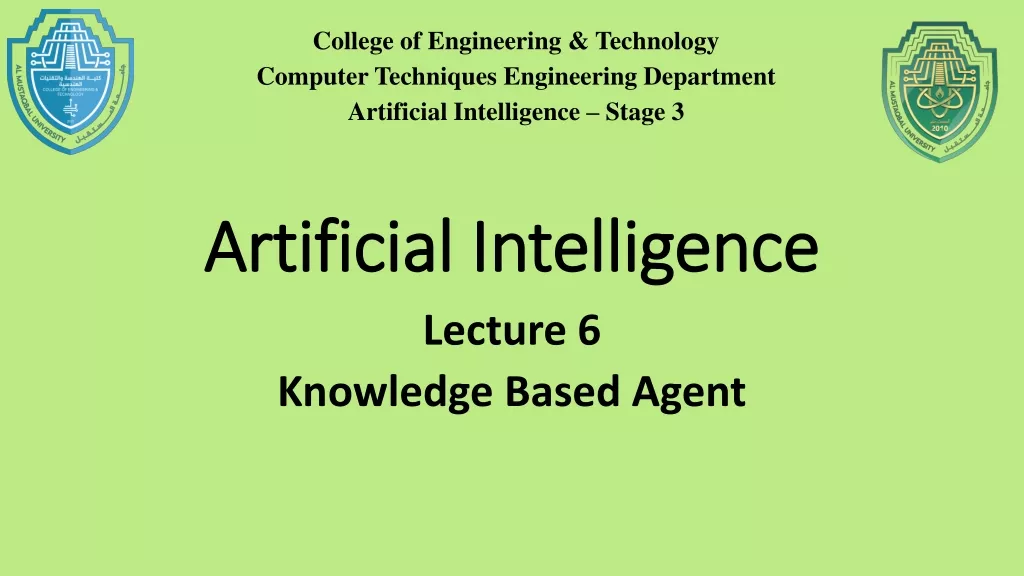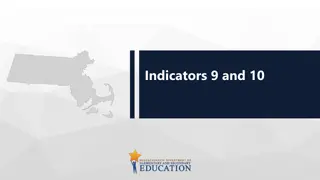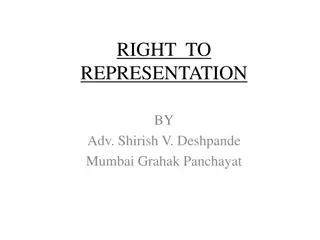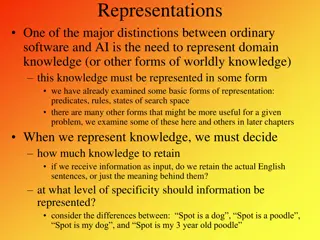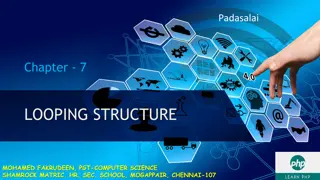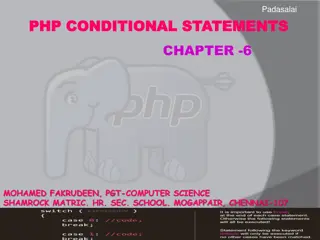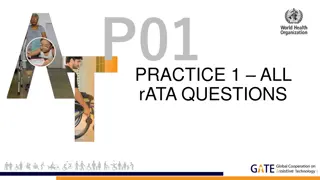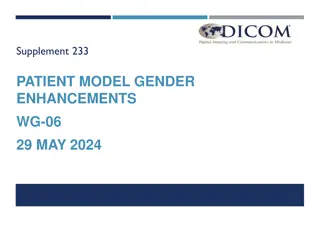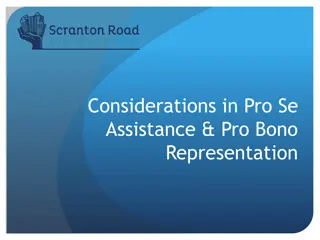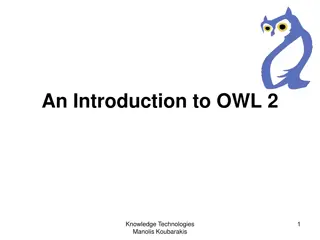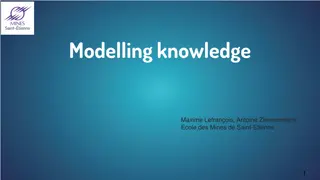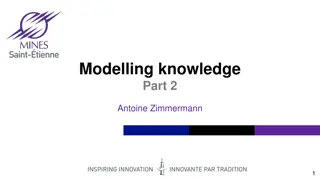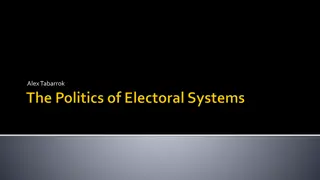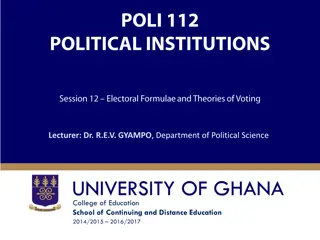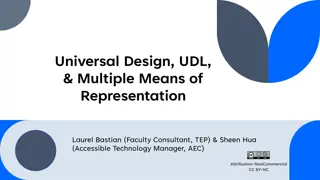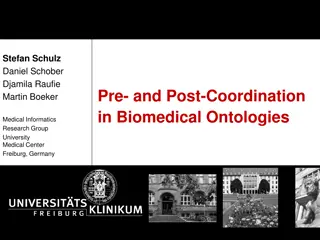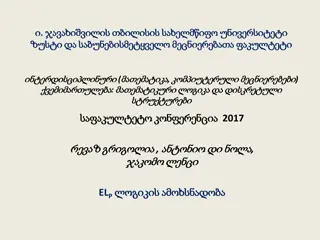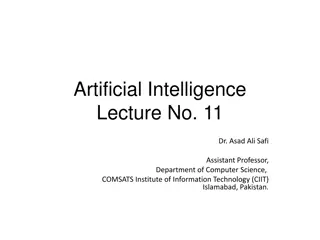Knowledge Representation and Description Logics
Classification of knowledge representation methods such as graph-based, object-oriented, and rule-based approaches is explored in this content. It delves into the challenges faced in object-oriented representation, particularly with slot relationships. The concept of Description Logics (DL) is discussed, emphasizing the absence of intrinsic characteristics in DL classes and the role of relations in expressing knowledge through relationships between classes, relations, and instances.
Download Presentation

Please find below an Image/Link to download the presentation.
The content on the website is provided AS IS for your information and personal use only. It may not be sold, licensed, or shared on other websites without obtaining consent from the author.If you encounter any issues during the download, it is possible that the publisher has removed the file from their server.
You are allowed to download the files provided on this website for personal or commercial use, subject to the condition that they are used lawfully. All files are the property of their respective owners.
The content on the website is provided AS IS for your information and personal use only. It may not be sold, licensed, or shared on other websites without obtaining consent from the author.
E N D
Presentation Transcript
Modelling knowledge Part 3 Antoine Zimmermann 1
Content Introduction Classification Graph-based knowledge representation Object oriented knowledge representation Description logic Rule-based knowledge representation (almost) 2 Institut Mines-T l com cole des Mines de Saint- tienne
Difficulties with object-oriented representation A pure OO representation describe classes (frames) and their characteristics (slots) Slots may relate a class to another class If there are many possible, but optional, relationships, it becomes difficult to describes these as slots of a class, e.g.: A person can own things A person can wear things A person can be close to other things A person can drive a vehicle Etc. 3 Institut Mines-T l com cole des Mines de Saint- tienne
Description logics (DL) Classes do not have intrinseque characteristics Relations exists independently from classes Knowledge is expressed by describing the relationships between classes, relations, and instances 4 Institut Mines-T l com cole des Mines de Saint- tienne
Description logics (DL) In DL, a name can correspond to three kinds of things: An individual name A concept name A role name Those are the "building blocks" in DL 5 Institut Mines-T l com cole des Mines de Saint- tienne
Interpreting DL names Assume that the universe of discourse is a non-empty set of things = the universe of discourse A thing in the universe 6 Institut Mines-T l com cole des Mines de Saint- tienne
Interpreting DL names An individual name corresponds to a thing in the universe, i.e., an element of = the universe of discourse Bob 7 Institut Mines-T l com cole des Mines de Saint- tienne
Interpreting DL names The universe may be infinite, so some things may not have a name = the universe of discourse unnamed thing Bob 8 Institut Mines-T l com cole des Mines de Saint- tienne
Interpreting DL names A concept name (also called a class) corresponds to a set of things in the universe, i.e., a subset of = the universe of discourse Person Bob 9 Institut Mines-T l com cole des Mines de Saint- tienne
Interpreting DL names A role name (also called a relation or property) corresponds to a binary relations over things in the universe, i.e., a subset of = the universe of discourse Person isCloseTo Bob 10 Institut Mines-T l com cole des Mines de Saint- tienne
Expressing basic knowledge In DL, one can express that a thing belong to a class, e.g., Bob is a Person: Person(Bob) = the universe of discourse Person Bob 11 Institut Mines-T l com cole des Mines de Saint- tienne
Expressing basic knowledge In DL, one can express that two things are in a relationship, e.g., Bob is close to the chair: isCloseTo(Bob,chair) = the universe of discourse chair isCloseTo Bob 12 Institut Mines-T l com cole des Mines de Saint- tienne
Expressing basic knowledge In DL, one can express that all things in a class are also in another class, e.g., all students are people: Student Person = the universe of discourse Person Student 13 Institut Mines-T l com cole des Mines de Saint- tienne
DL complex concepts In DL, one can refer to sets of things that are not named but can be defined in relation to existing names: Person Female Person Female 14 Institut Mines-T l com cole des Mines de Saint- tienne
General DL concepts Concept names are DL concepts If C1and C2are DL concepts, then the following are DL concepts too: Intersection: C1 C2(e.g., Female Parent) Union: C1 C2(e.g., Father Mother) Complement: C1(e.g., Married) Universal concept: Bottom concept: 15 Institut Mines-T l com cole des Mines de Saint- tienne
General DL concepts A concept name A represents a set of things I(A) Each DL concept C represents a set of things I(C) defined recursively: I(C1 C2) = I(C1) I(C2) I(C1 C2) = I(C1) I(C2) I( C1) = I(C1) I( ) = I( ) = 16 Institut Mines-T l com cole des Mines de Saint- tienne
General Concept Inclusions DL concepts can be arbitrarily complex: (Female Married) (Male Married) With general DL concepts, one can express disjointness of two classes: Male Female 17 Institut Mines-T l com cole des Mines de Saint- tienne
Exercise List concept names, role names, individual names for expressing a trip plan in an online traveller information service Define a class hierarchy and more complex concept inclusions (e.g., disjointness of classes) 18 Institut Mines-T l com cole des Mines de Saint- tienne
General DL concepts: role restrictions If C is a DL concept, R is a role name, n is a positive integer, then the following are DL concepts too: Existential restriction: R.C (e.g., parentOf. ) Universal restriction: R.C (e.g., parentOf.Female) At-least restriction: n R.C (e.g., 2 childOf.Parent) At-most restriction: n R.C (e.g., 2 childOf.Parent) Local reflexivity: R.Self (e.g., talksTo.Self) 19 Institut Mines-T l com cole des Mines de Saint- tienne
Meaning of role restrictions A role name R represents a binary relation I(R) Role restrictions represent the following concepts: I( R.C) = {x | y I(C), (x,y) I(R)} I( R.C) = {x | y , (x,y) I(R) y I(C)} I( n R.C) = {x | y1, ,yn I(C), (x,yi) I(R) yi yj} I( n R.C) = {x | at most n elements in I(C) in relation with x via role R} I( R.Self) = {x | (x,x) I(R)} 20 Institut Mines-T l com cole des Mines de Saint- tienne
Meaning of role restrictions Warning! In DL does not state the existence of a thing. hasFather.God does not claim that there is someone or something whose father is a god. hasFather.God just represents a set of things (possibly empty) 21 Institut Mines-T l com cole des Mines de Saint- tienne
Exercises Does it make sense? What does it mean? owns.Unicorn And this? Person hasParent.Person hasParent.Person Person 22 Institut Mines-T l com cole des Mines de Saint- tienne
General DL concepts: other constructions If R is a role name, it is a DL role If a1, ,anare individual names, R1and R2are DL roles, n is a positive integer, then: Nominals: {a1, ,an} is a DL concept (e.g., {john,paul,george,ringo}) Role inverse: R is a DL role (e.g., childOf ) Role inclusion: R1 R2(e.g., parentOf childOf ) Transitivity, reflexivity, symmetry, asymmetry: Trans(R), Refl(R), Sym(R), Asym(R) (e.g., Trans(inside)) 23 Institut Mines-T l com cole des Mines de Saint- tienne
Meaning of role restrictions Warning! In DL does not state the existence of a thing. hasFather.God does not claim that there is someone or something whose father is a god. hasFather.God just represents a set of things (possibly empty) 24 Institut Mines-T l com cole des Mines de Saint- tienne
Exercises Try to model, in general, the notion of sequence, then use it to define the instructions in a recipe, or a trip plan Try to model, in general, the notions of physical quantities 25 Institut Mines-T l com cole des Mines de Saint- tienne
Examples (1) Sequences: a sequence is either the empty sequence or composed of a first element and a remaining sequence. A non-empty sequence has exactly one first element, and is followed by exactly one sequence. An empty sequence does not have a first element and is not followed by any remaining sequence. EmptySeq Seq first. next. Seq 1first. 1next. next.Seq Note: this does not exclude cycles 26 Institut Mines-T l com cole des Mines de Saint- tienne
Examples (2) A gin tonic is a beverage than contains gin (a juniper-based spirit) and tonic water (a carbonated, quinine-flavoured, non alcoholic beverage). My gin tonic adds ice cubes and a lemon twist, and nothing else. AlcoholicBeverage Beverage contains.Alcohol NonAlcoholicBeverage Beverage contains.Alcohol Spirit AlcoholicBeverage Gin Spirit TonicWater NonAlcoholicBeverage GinTonic Beverage contains.Gin contains.TonicWater MyGinTonic GinTonic contains.IceCube contains.LemonTwist contains.(Gin TonicWater IceCube LemonTwist) 27 Institut Mines-T l com cole des Mines de Saint- tienne
Examples (3) A role is something that someone or something can play at some point in time. Roles are often modelled as classes of people because at a given point in time, they correspond to a person. For instance, students are people, but a person may have been a student . HigherEdInstitution Organization FrenchGrandSchool HigherEdInstitution FrenchGrandSchool(emse) Person(Paul) Studentship(paul-at-emse) playedBy(paul-at-emse, Paul) starts(paul-at-emse, 2016-09-01) ends(paul-at-emse, 2019-09-01) at(paul-at-emse, emse) 28 Institut Mines-T l com cole des Mines de Saint- tienne
References Kr tzsch, Simancik, Horrocks. A Description Logic Primer. 2012 http://arxiv.org/pdf/1201.4089v1.pdf Logiques descriptives et OWL. Michel Gagnon. https://moodle.polymtl.ca/pluginfile.php/203180/ mod_resource/content/4/logique_descriptive2.p df 29 Institut Mines-T l com cole des Mines de Saint- tienne
